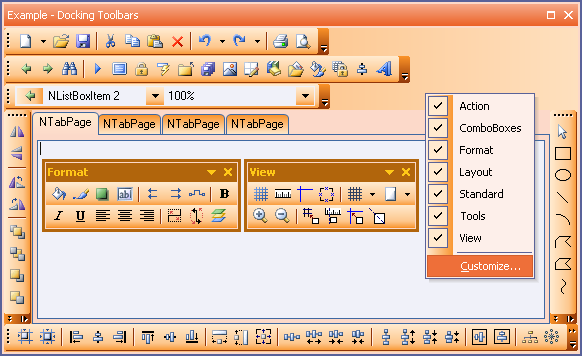
Nevron Command Bars are powerful extended controls meant to provide the professional end-user presentation layer to your applications. They encapsulate the following definitions for a command:
Currently Nevron Command Bars expose the following command parents:
This model allows for command reusability and common execution model. The bridge between the abstraction "Command" and its visualizations is provided by command contexts. For more information about these objects see Command Contexts Overview.
Commands, command contexts and toolbars can be encapsulated into a powerful docking framework managed by a NCommandBarsManager component. Enrich your application with Office-2003-like dockable toolbars and flat menus, and experience smooth and professional looking gradients and borders. The manager provides you with rich run and design-time support via its advanced visual editor, letting you create new toolbars and command items clone, reorder and customization.